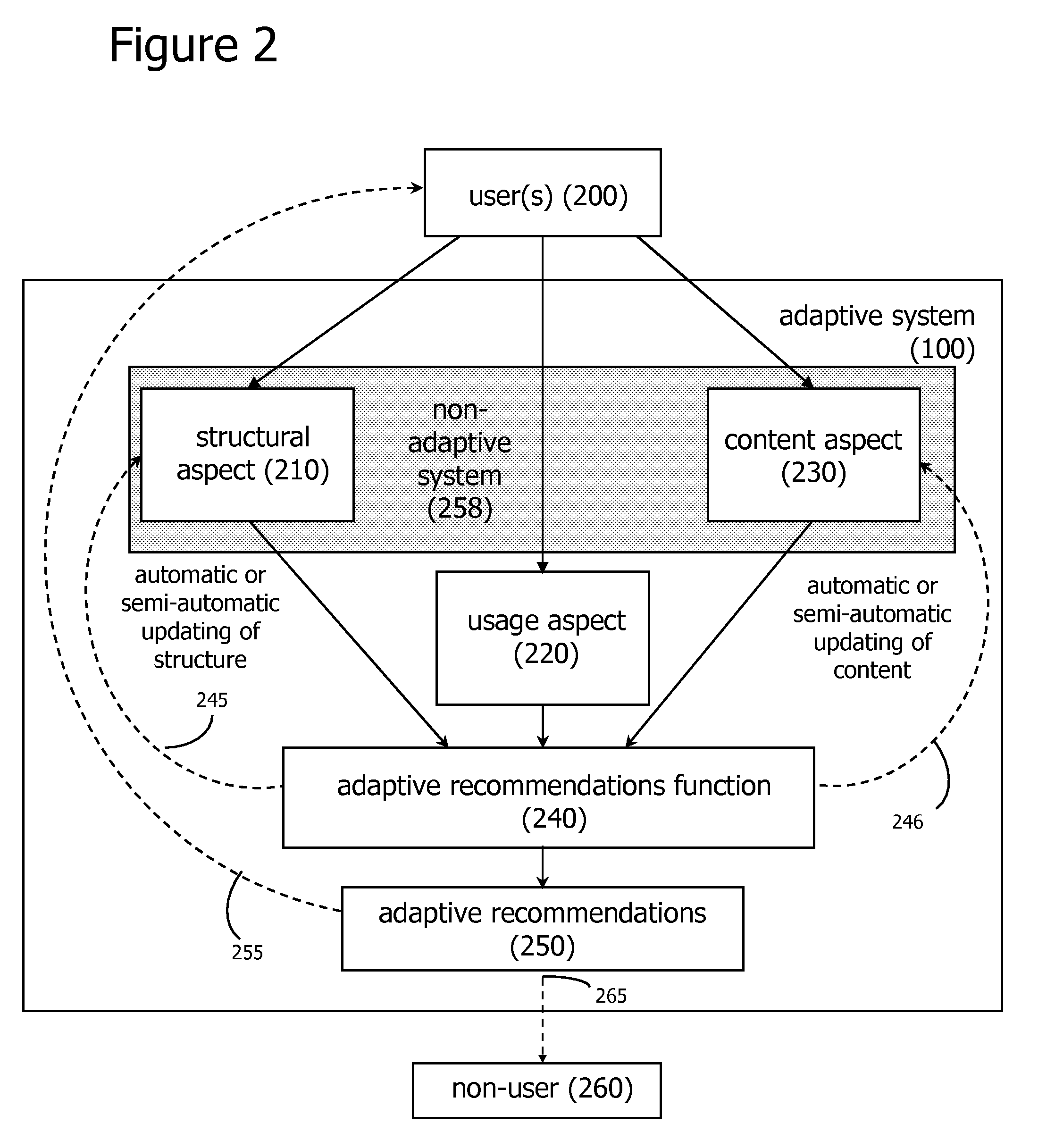Adaptive social computing methods
a social computing and social computing technology, applied in the field of software programs, can solve the problems of limited inherent ability to adapt to changing circumstances without direct human intervention, limited ability of specific computer applications that are underpinned by prior art information management approaches in their ability to adapt to changing circumstances and user requirements, and generally not be dynamically separated from subsets of computing applications. to achieve the effect of facilitating adaptation to changing circumstances
- Summary
- Abstract
- Description
- Claims
- Application Information
AI Technical Summary
Benefits of technology
Problems solved by technology
Method used
Image
Examples
function example
Adaptive Recommendations Function Example
[0346]FIG. 43 is a flow diagram depicting the operation of an adaptive recommendations function 900 used in the Epiture software system, according to some embodiments. The Epiture software system is one implementation of an adaptive recombinant system, such as the system 800 depicted in FIG. 18. The network described in this example is a fuzzy content network. Recall that the adaptive recommendations function includes algorithms for generating adaptive recommendations to a user in the form of structural subsets 280.
[0347]The following data is used by the adaptive recommendations function 900 in generating recommendations:[0348]1) the communities that a user is a member of[0349]2) relationships between those communities and user's preferences (including temporal dimensions that may indicate strengthened or weakened interest in those communities)[0350]3) a user's or other pre-defined system explicit preference of those communities in this conte...
further example embodiment description
[0370]The screenshot 770 also depicts a user personal library function 714, denoted “My Personal Topics,” for a particular user. A screenshot 720 in FIG. 45 illustrates the use of the adaptive recommendations function, as shown in a “Recommended For You” graphic 722, with a list of suggestions. A “My Path” graphic 724 also with a list, represents the path of objects the user has already browsed. The recommendations in 722 adapt as the user browses different objects.
[0371]In the screen mage 790 of FIG. 40, the ‘MyPath’ function represents the journey a user has made in the network during their session. The user may browse the list of objects that they have visited during a session. There are further options to save an object as part of their MyWorld personal library and also to remove an object from their path. The MyPath function may be useful to users in identifying areas of the network they have browsed before, and users may also elect to share a specific path or all paths with ot...
PUM
 Login to View More
Login to View More Abstract
Description
Claims
Application Information
 Login to View More
Login to View More - R&D
- Intellectual Property
- Life Sciences
- Materials
- Tech Scout
- Unparalleled Data Quality
- Higher Quality Content
- 60% Fewer Hallucinations
Browse by: Latest US Patents, China's latest patents, Technical Efficacy Thesaurus, Application Domain, Technology Topic, Popular Technical Reports.
© 2025 PatSnap. All rights reserved.Legal|Privacy policy|Modern Slavery Act Transparency Statement|Sitemap|About US| Contact US: help@patsnap.com



